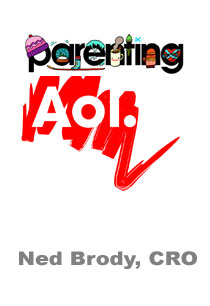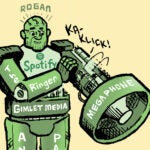 Last Thursday, Aol and Bonnier’s Parenting Group announced a deal which will bring Parenting.com content to Aol owned and operated sites as well as leverage Aol’s salesforce and ad products on behalf of Parenting.com’s own site. Read more.
Last Thursday, Aol and Bonnier’s Parenting Group announced a deal which will bring Parenting.com content to Aol owned and operated sites as well as leverage Aol’s salesforce and ad products on behalf of Parenting.com’s own site. Read more.
Ned Brody, CRO and President of AOL Advertising, discussed the deal.
Click below or scroll for more:
AdExchanger.com: So, this seems like a syndication deal – at least from Parenting.com’s perspective. How has the syndication of digital content changed in the past couple of years?
NB: For us, this is really about an audience aggregation play that provides advertisers a better scale opportunity to buy one of the most interesting audiences in the market, essentially, parents. Now as part of that, when they have content that we think is great, we can run that content on our site and vice‑versa. If anything, I think the comment that you’re really looking at from a syndication perspective is that while consumers can search for anything they want, that is a proactive action.
Editorialization, or “curation” to use the trendier word, doesn’t require active use of a consumer. So if Aol brings in some strong content from other sites – which is part of the Huffington Post formula – and picked the content for its quality and level of interest, then that’s a benefit to my consumer. Early syndication deals were around pushing content out for monetization purposes. For us, the only syndication piece of it is that we enjoy is the opportunity to pull in other content from sites that would be enjoyed by our user base.
But, first and foremost, this is really a content aggregation play focused on advertisers and our tools from a publisher perspective. And, you and I have had the conversation that at AOL we’ve been spending a lot of effort over the last couple years building out our publisher tool kit. It really started with Advertising.com. We added video through GoViral and 5min. We have added technology from companies like ADTECH where we can both manage [a publisher’s] stack and monetization. When we take over the reserved sales for a company, it leverages our existing sales force in combination with all those optimization pieces. Of course, the last piece I shouldn’t leave out is the increased yield. As publishers look to increase their yield, we feel like we have a more robust offering to those publishers through the combination of our technology, in addition to our salesforce.
Do you see this as an emerging opportunity for skilled, direct sales forces, which may have an ad network, too? – and, the content creator in the future won’t need a salesforce?
It happens today already, in that, smaller sites do not typically have their own salesforces. There are models like Glam and others where content is aggregated and sold through a salesforce that creates a whole out of smaller parts.
It all comes down to ad buyers ‑ there’s a fixed amount of ad buying time. If you are at an agency or advertiser, you only have time to see so many pitches and have so many relationships. Are you going to take that two hours next Wednesday and have that with an AOL or are you going to have that with a small site that doesn’t have much reach? That’s the kind of calculus that exists in the marketplace today. We have, both in content and in salesforce size, a strong relationship with the vast majority of the largest advertisers and agencies in the marketplace so I think it makes logical sense. But I think the market will be there. I don’t think there’s a lot of this right now and I don’t know whether we would continue doing it, but for now, we think this is an exciting opportunity for us and we like the parenting.com content. So it makes sense on a number of levels.
Can you drill into what are some of the success metrics you’re going to be looking at for a deal like this?
For us, it comes down to the same things we look at on our own site so we won’t differentiate. Frankly, between their content and our content, it becomes one. So we would obviously like to see greater revenue numbers and hopefully a greater percentage sell through rate. If you average the two together, ours is already quite high – and [we would also like to see] all the other things like yield -the traditional things that matter to any publisher.
Does this deal speak in any way to maybe a real‑time bidding opportunity or maybe AdLearn, specifically?
We’re not going to really differentiate between their inventory and our inventory, which means that we have a whole host of opportunities through which to monetize that inventory. So we obviously have ‑ on a reserved basis – our direct salesforce. We have things like Pictela and video to drive yield. Then, if it doesn’t get sold on a reserved basis, on a non‑reserved basis, we have ad.com. All of this flows through AdLearn and our soon to launch DSP, adlearn.com platform.
All those opportunities for monetization get brought to the fore.
Finally, what’s the message for brand marketers here with this kind of deal?
Greater scale through a single source. In other words, more of the most important audiences available through a single buy with a single reporting and invoicing system – all of that.
By John Ebbert












